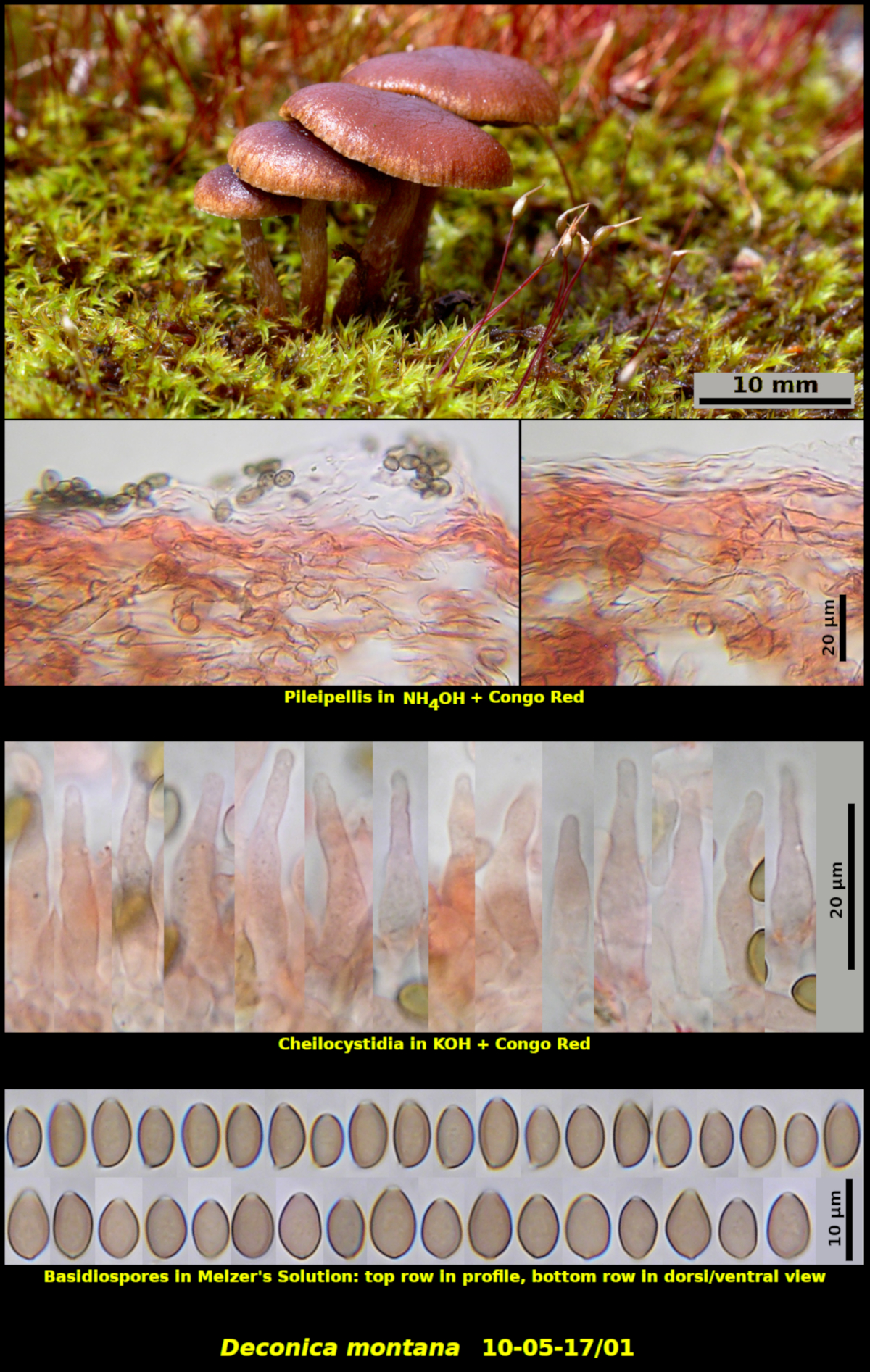Fleshy Fungi of New Brunswick >>
Deconica montana
Deconica montana (Pers.) P.D. Orton

Clustered (4) among mosses on large boulder – Little Lepreau, New Brunswick (10-05-17/01).
Basidiospores purplish chocolate brown (HSV350:40:40) in spore print, ellipsoidal to ovoid, slightly broader in dorsi-ventral view, with an apical germ pore, smooth-walled, darkening in 3% NH4OH, 6.5-8.7 x 3.9-4.9 x 4.6-5.6 μm, Q1 = 1.60-1.84, Q2 = 1.43-1.73 (average[30]: 7.8 x 4.5 x 5.0 μm, Q1 = 1.71, Q2 = 1.58). Basidia produced in dense chains from proliferating clamp connections, 4-spored. Cheilocystidia abundant, mixed with basidia, ventricose to ventricose-rostrate, 21-33 x 3.4-6.1 μm. Pleurocystidia lacking. Pileipellis a thin ixocutis, with a well-defined subcutis of densely arranged non-gelatinized hyphae. Pilear trama a loose tissue of brown, strongly encrusted hyphae.Clamp connections present on all hyphae, less conspicuous on the basidia because of proliferations.
Deconica montana is an inconspicuous little mushroom found growing among mosses, usually in exposed or disturbed habitats. It is characterized by its subviscid red-brown pileus and by its stipe with bands and patches of white universal veil material. Under the microscope it has brown thick-walled basidiospores that are slightly flattened dorsi-ventrally and have conspicuous germ pores. The pileipellis is a gelatinous ixocutis of more or less parallel hyphae.
In much of the mycological literature Deconica montana has been considered to be a species of Psilocybe. However, molecular studies (eg. Matheny et al. Mycologia. 98: 982–995. 2006) have shown that the genus Psilocybe should be restricted to species having blue or green colours appearing when the flesh is bruised, especially near the base of the stipe. Deconica then, contains those species formerly included in Psilocybe that lack the green reaction.
Photograph: D. Malloch (10-05-17/01).